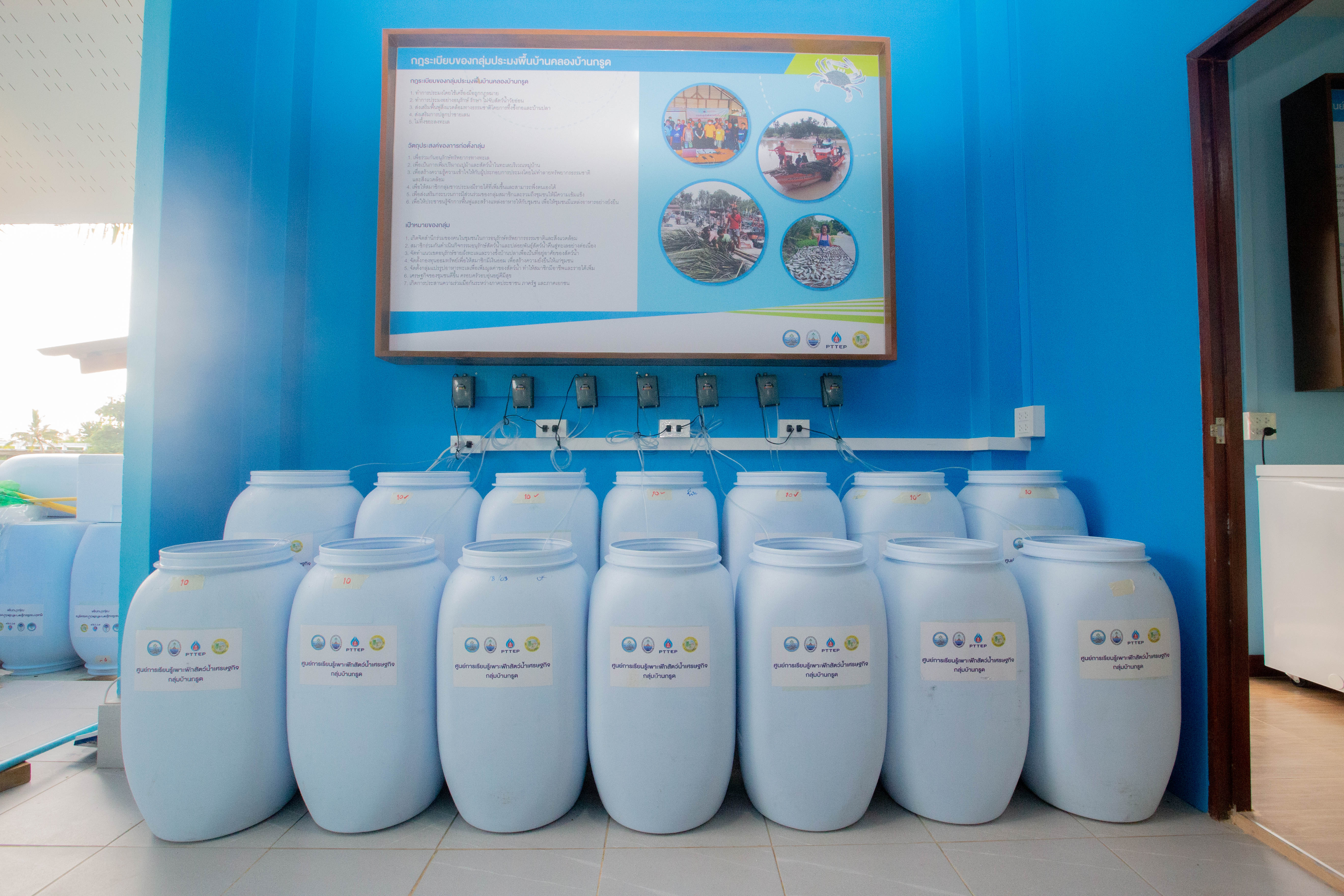| |

The Aquatic Animal Hatchery Learning Center, aimed at promoting economic aquatic animal aquaculture, has been transformed from crab hatchery learning center in Songkhla province. In collaboration with the Department of Marine and Coastal Resources, local administrative authorities, and various communities, the learning center is initiated to transfer knowledge and promote conservative fishing for communities in 17 coastal provinces in the Gulf of Thailand. Through the center, a marine resource conservation network is established, to conserve and promote sustainable fishing and integrated technology in the enhancement of local fishing groups’ knowledge.
PTTEP plans to expand the number of learning centers to 19, covering all 17 coastal provinces along the Gulf of Thailand. To date, the Aquatic Animal Hatchery Learning Center Project has expanded to 12 provinces, with a total of 14 centers located in Songkhla, Pattani, Nakhon Si Thammarat, Surat Thani, Prachuab Khiri Khan, Phetchaburi, Samut Songkhram, Chumphon, Rayong, Chanthaburi, Chonburi, and Samut Prakan provinces.
Furthermore, PTTEP has extended support for the establishment of a coastal and marine resource conservation network which currently includes 7,891 members. A total of 29 fish homes have been installed along the coastal conservation area covering 15.3 square kilometers. Through these learning centers, knowledge of aquatic animal hatchery has been disseminated to all interested individuals and general public. To date, over 90,000 visitors have attended the Learning Centers. The fishermen's revenue has increased to THB 33,990 (USD 971) per household per month and more than 37,000 million juvenile crab and aquatic animal have been released back to nature.
PTTEP has carried out analysis on Social Return on Investment (SROI) of this project by measuring the social impact of the program with the financial quantification calculation (monetization). This method is intended to measure the value of the financial impact of the program that compares to the value of the impact to the cost of the program that has been invested into.
It appears that the value of the SROI ratio is 4.13:1
|
|